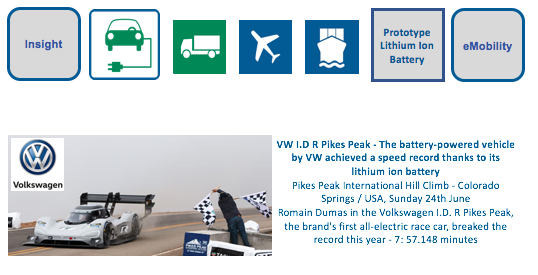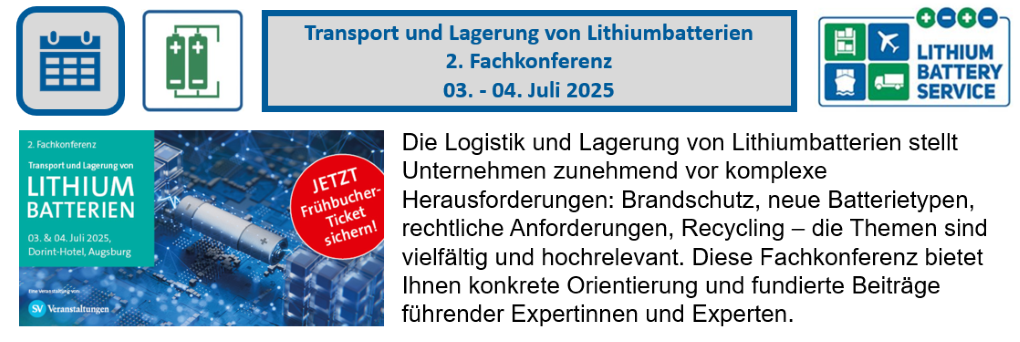A battery-powered racing car did leave the opponents with combustion engine behind This is not only due to the carbon built up but also due to the high performance lithium ion battery.
A battery-powered racing car did leave the opponents with combustion engine behind This is not only due to the carbon built up but also due to the high performance lithium ion battery.

A battery-powered racing car did leave the opponents with combustion engine behind
This is not only due to the carbon built up but also due to the high performance lithium ion battery.
A good description of the lithium ion battery could be found on the website from the German online magazine "Auto, Motor und Sport“. Here the English translation to it:
The energy of the VW I.D. R Pikes Peak is contained in a cleverly set up specail lithium ion battery. This lithium ion battery was adjusted to its use in the racing car. And the requirements were given by the Pikes-Peak-Rules: If someone has to stop their race for safety reasons (e.g. hail or another car needing to be rescued) one has 20 minutes time to start a second try. VW was prepared for all eventualities and their lithium ion battery in the VW I.D. R Pikes Peak was constructed to be fully recharged during that time period.
At VW the same team was responsible for the development of this HV storage that designed the VW I.D. series. Yet the differences between the I.D. R Pikes Peak Lithium Ion Battery and a serial lithium ion battery are enormous because the requirements differ so much. On the 19,99 km stretch up to the summit of Pikes Peak the racing car needs to cope with 156 bends and just as many accelerations phases which the lithium ion battery of the 680 PS vehicle needs to make possible. The lithium ion battery has a high energy density and is recharged carefully.
The charging capacity is just 90 Kilowatts and through this prevents immense heat build-up during the charging process. This lithium ion battery can be cooled by air while charging. Its ideal functioning temperature is at 30 °C. At Pikes Peak in June there may be freezing temperatures and also high summer temperatures aparent. If it gets too cold this can cause problems for the HV lithium ion battery through condensation.
The lithium ion battery in the VW I.D. R Pikes Peak consists of two blocks which are placed next to and behind the cockpit. They receive their electricity from a mobile gylcerin aggregate. VW decided on using glycern because this substance is not toxic and can be incinerated residue-free (Food colour additive E422) and is a bi-product of bio diesel production. The generator does not only deliver the electricity for the race car but also for all electrical components in the race team box like the engineers computers or the coffee maker.
Here the link to the German text:
https://www.auto-motor-und-sport.de/motorsport/vw-id-r-pikes-peak-daten-bilder-elektro-rennwagen-rekord/?block=1&private=1












